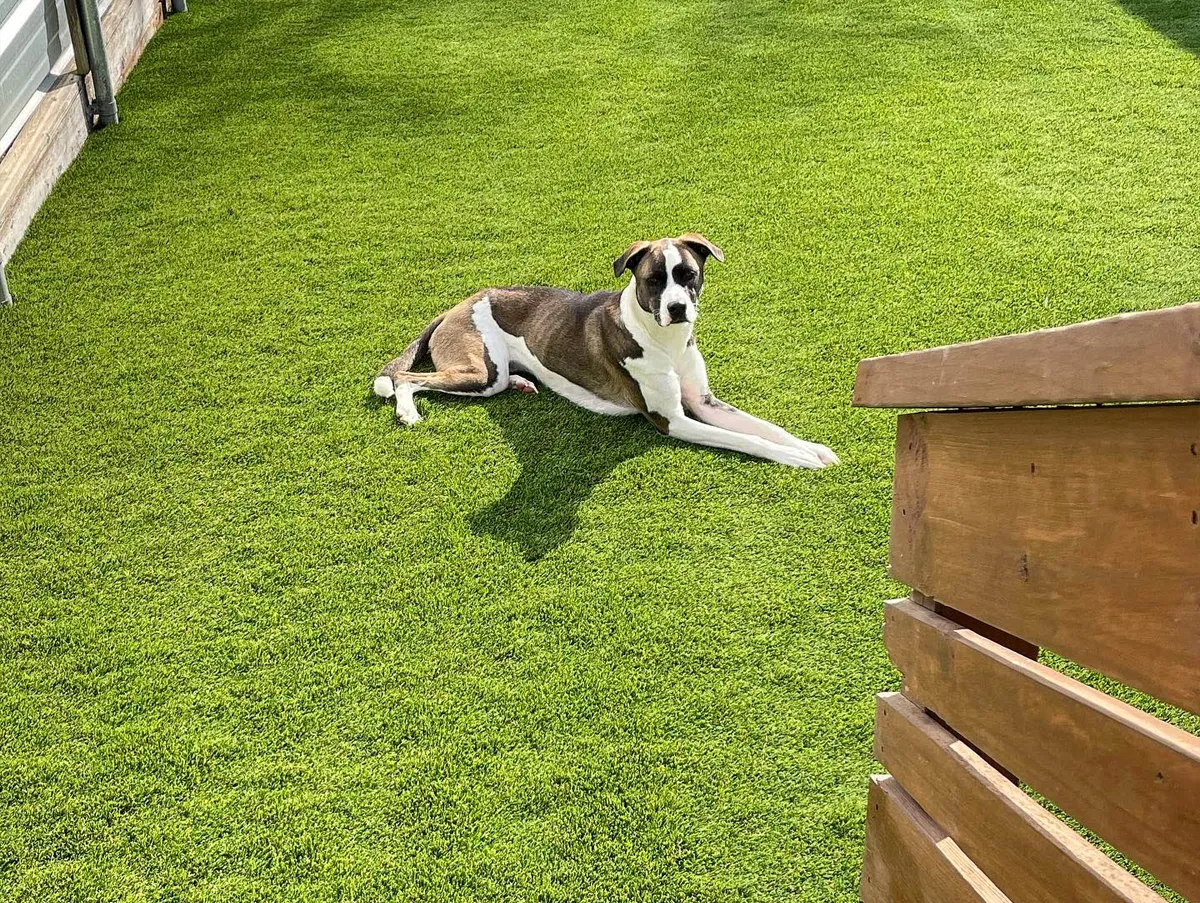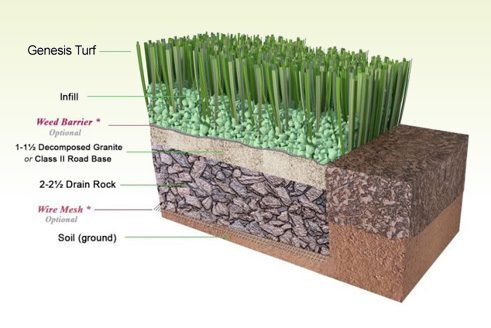Explore the Environmental Perks of Opting for Synthetic Grass Solutions
The adoption of man-made lawn solutions provides a compelling possibility to resolve pushing environmental difficulties. By substantially reducing water usage and reducing the application of hazardous chemicals, these alternatives not just promote lasting landscaping however also protect regional communities.
Water Preservation Benefits
One of the most significant benefits of artificial turf is its capacity to conserve water. In comparison, synthetic turf does not need watering, considerably lowering the total demand for water resources.
By eliminating the requirement for normal watering, synthetic grass contributes to lasting landscape methods and assists minimize the ecological impact of excessive water intake. Moreover, the conservation of water extends to the decrease of runoff, which can result in soil disintegration and river contamination.
In addition, the installment of synthetic grass permits communities and homeowners to designate water resources more successfully, concentrating on vital uses such as drinking water and farming. The change in the direction of synthetic grass not just promotes accountable water usage but likewise aligns with wider environmental objectives targeted at preserving natural deposits.
As neighborhoods progressively focus on sustainability, the water conservation advantages of synthetic grass provide a compelling case for its fostering in industrial and residential landscape design projects.
Reduced Chemical Usage
The change to fabricated turf dramatically reduces the dependence on chemical treatments typically utilized in all-natural turf upkeep. Traditional lawn administration normally includes the application of plant foods, herbicides, and chemicals to advertise development and control insects. These chemicals can posture dangers to human health and wellness, regional wildlife, and the setting, adding to soil and water contamination.
In contrast, man-made grass eliminates the need for these unsafe compounds. As soon as set up, it calls for marginal maintenance, mainly containing normal cleaning and seldom infill replenishment. This reduction in chemical usage not only profits the prompt setting but additionally adds to broader eco-friendly stability. By decreasing the launch of synthetic substances right into the ecosystem, man-made turf advertises healthier soil and water supply.
Furthermore, the lack of chemical overflow connected with synthetic grass installments aids protect local waterways from air pollution, supporting water life and preserving biodiversity. Arizona turf. As areas significantly focus on sustainable techniques, going with artificial lawn presents a practical solution that aligns with environmental conservation objectives. Via this change, homeowner can take pleasure in rich environment-friendly rooms without compromising environmental wellness, leading the way for an extra sustainable future
Reduced Carbon Footprint

Furthermore, the installment of synthetic lawn can lead to considerable water preservation. All-natural yards call for significant amounts of water for irrigation, which not just includes in the carbon footprint connected with water removal and treatment yet likewise pressures local water sources. In comparison, synthetic grass needs marginal maintenance, needing no watering, therefore substantially minimizing water use and its linked energy expenses.
Furthermore, the longevity of synthetic grass adds to its lower carbon effect. With a life expectancy of approximately 15 years or even more, the demand for regular substitutes is lessened, leading to less waste and lower power consumption in manufacturing and disposing of traditional yard options. In general, synthetic grass provides a lasting choice for eco aware landscape design.
Habitat Preservation
Habitat preservation is an Full Report important consideration in the dispute over landscape design selections, specifically when comparing man-made turf to natural turf. Natural turf yards frequently call for considerable upkeep, including using herbicides, chemicals, and fertilizers, which can adversely affect local environments. These chemicals can seep right into the soil and waterways, hurting native plants and animals and disrupting neighborhood environments.
Artificial lawn removes the requirement for unsafe chemicals, thereby shielding nearby wildlife and maintaining the honesty of bordering ecological communities. The installment of synthetic grass can lead to the conversion of former yard areas into even more biodiverse landscapes, such as pollinator gardens or indigenous plant areas, which can support regional wildlife.
Ultimately, the change to synthetic grass not only saves water and reduces maintenance efforts but additionally promotes an extra unified relationship in between human activities and the natural surroundings, advertising environment conservation at the same time.
Long-Term Sustainability
Long-lasting sustainability is a critical aspect in reviewing the benefits of synthetic grass over typical yard lawns. Among one of the most considerable benefits of synthetic grass is its durability; it can last up to 15-20 years with minimal upkeep, whereas all-natural grass needs constant reseeding and substitute. This long life decreases the requirement for consistent resources, such as water, plant foods, and chemicals, which are crucial for preserving a healthy turf yard.
Additionally, fabricated turf adds to a reduction in carbon exhausts connected with lawn care devices. Standard lawns usually require gas-powered lawn mowers, trimmers, and blowers, every one of which contribute to air pollution. Phoenix turf companies. On the other hand, man-made grass eliminates the requirement for such equipment, promoting a cleaner atmosphere
In addition, the manufacturing of synthetic grass progressively makes use of recycled products, enhancing its sustainability profile. As producers take on environment-friendly methods, the environmental footprint of synthetic grass continues to reduce.

Conclusion
The adoption of synthetic grass solutions presents substantial environmental advantages, consisting of considerable water preservation, lowered reliance on damaging chemicals, and a reduced carbon footprint. Man-made lawn aids in maintaining natural habitats by decreasing land disruption and advertising long-term sustainability through the use of durable products. Jointly, these aspects emphasize the potential of synthetic grass to add favorably sites to environmental health and offer a feasible alternative to traditional landscape design methods in an increasingly resource-conscious globe.
In comparison, fabricated grass does not require watering, dramatically decreasing the total need for water resources. By the original source lessening the launch of synthetic substances right into the ecosystem, man-made grass promotes healthier soil and water systems.
Moreover, the setup of fabricated grass can result in considerable water conservation. In contrast, fabricated turf requires marginal upkeep, calling for no watering, thus substantially reducing water usage and its connected energy expenses.
